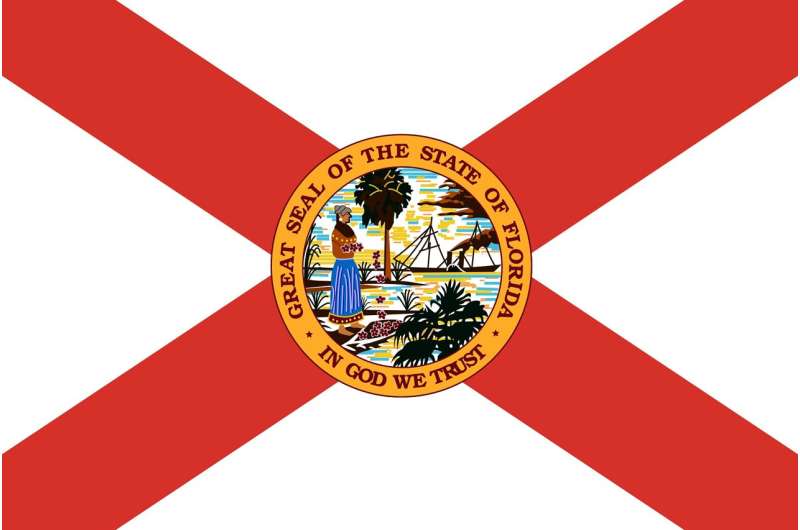This article has been reviewed according to Science X's editorial process and policies. Editors have highlighted the following attributes while ensuring the content's credibility:
fact-checked
trusted source
proofread
Researcher reveals the hidden story behind St. Augustine's 11-foot statue of Francisco López de Mendoza Grajales

New details have emerged about the history of one of St. Augustine's most popular tourist attractions. University of South Florida Spanish Professor David Arbesú pieced together documents that were scattered around the world that helped connect the dots about the life of Francisco López de Mendoza Grajales, believed to be the first priest in the United States. An 11-foot statue of him is located on the grounds of Mission Nombre de Dios near Matanzas Bay.
As published in the Florida Historical Quarterly, "The First Man to Plant the Holy Gospel in Florida" chronicles Mendoza's journey in helping establish the first permanent Christian mission in the United States and his role in what many scholars believe was the first Thanksgiving feast.
Mendoza, who we now know lived from 1527 to 1586, sailed across the Atlantic in 1565 alongside Pedro Menéndez de Avilés, who the King of Spain tasked to remove French settlers and establish a colony in Florida. After the three-month expedition, Menéndez founded America's first city, St. Augustine, where Mendoza would play a crucial role.
"He brought Catholicism to America and gave the first Christian mass in the United States," Arbesú said. "As important as Mendoza may have been for the early history of Florida, all we knew about his life were the first four years he spent in Florida—that's it."
After finding Mendoza's baptismal records that were recently made public by a church in Spain, Arbesú was able to pinpoint the year Mendoza was born and, from there, piece together a timeline of what his life was like before and after he joined Menéndez's expedition.
At 38 years old, Mendoza began the three-month expedition to Florida, where Arbesú believes he stayed for about seven years before moving back to his native community in Spain. After a couple of years, Mendoza moved to Nicaragua, according to new documents Arbesú discovered in Oklahoma. There, Mendoza held several distinguished roles in the León Cathedral—a World Heritage Site—before eventually becoming Commissary of the Holy Inquisition as he continued to spread Catholicism in the Americas.
"These records trace the priest's lineage back to the Middle Ages and reveal a previously unknown side of his personality," Arbesú said. "This new evidence allows researchers to revisit all the records on Mendoza's life to clarify aspects, correct mistakes and ultimately understand the first parish priest in the continental United States."
The biography reveals details of his life for the first time, including the name Francisco Grajales de Mendoza he used when he was younger, the fact he likely practiced cannibalism to survive the winter of 1565 to 1566 and the witness account of him fighting at knifepoint over a woman. But the most moving: Letters Arbesú found in the National Archives of Mexico that determined the exact date of Mendoza's death.
"He wrote to the inquisitors of Mexico City that he had become so ill that he was 'in the last trance and end of my life'," Arbesú said. "It was a touching letter to read after studying his life for so long. To see him get to a point where he could not even sign his name, it was emotional."
More information: "The First Man to Plant the Holy Gospel in Florida:" A New Biography of Francisco Lopez de Mendoza Grajales (1527-1586) stars.library.ucf.edu/fhq/vol101/iss2/3/
Provided by University of South Florida





















